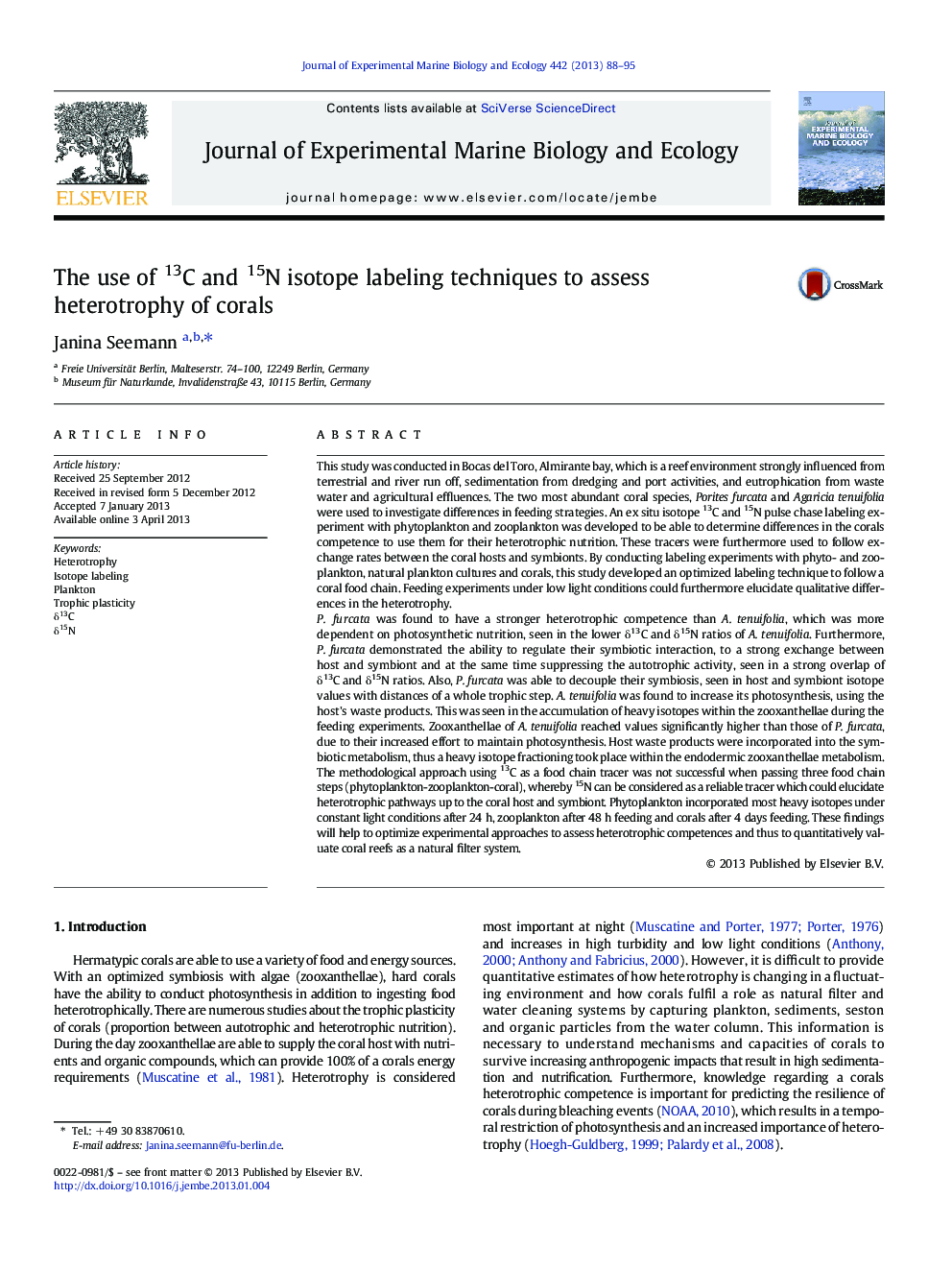| کد مقاله | کد نشریه | سال انتشار | مقاله انگلیسی | نسخه تمام متن |
|---|---|---|---|---|
| 4395693 | 1618433 | 2013 | 8 صفحه PDF | دانلود رایگان |

This study was conducted in Bocas del Toro, Almirante bay, which is a reef environment strongly influenced from terrestrial and river run off, sedimentation from dredging and port activities, and eutrophication from waste water and agricultural effluences. The two most abundant coral species, Porites furcata and Agaricia tenuifolia were used to investigate differences in feeding strategies. An ex situ isotope 13C and 15N pulse chase labeling experiment with phytoplankton and zooplankton was developed to be able to determine differences in the corals competence to use them for their heterotrophic nutrition. These tracers were furthermore used to follow exchange rates between the coral hosts and symbionts. By conducting labeling experiments with phyto- and zooplankton, natural plankton cultures and corals, this study developed an optimized labeling technique to follow a coral food chain. Feeding experiments under low light conditions could furthermore elucidate qualitative differences in the heterotrophy.P. furcata was found to have a stronger heterotrophic competence than A. tenuifolia, which was more dependent on photosynthetic nutrition, seen in the lower δ13C and δ15N ratios of A. tenuifolia. Furthermore, P. furcata demonstrated the ability to regulate their symbiotic interaction, to a strong exchange between host and symbiont and at the same time suppressing the autotrophic activity, seen in a strong overlap of δ13C and δ15N ratios. Also, P. furcata was able to decouple their symbiosis, seen in host and symbiont isotope values with distances of a whole trophic step. A. tenuifolia was found to increase its photosynthesis, using the host's waste products. This was seen in the accumulation of heavy isotopes within the zooxanthellae during the feeding experiments. Zooxanthellae of A. tenuifolia reached values significantly higher than those of P. furcata, due to their increased effort to maintain photosynthesis. Host waste products were incorporated into the symbiotic metabolism, thus a heavy isotope fractioning took place within the endodermic zooxanthellae metabolism. The methodological approach using 13C as a food chain tracer was not successful when passing three food chain steps (phytoplankton-zooplankton-coral), whereby 15N can be considered as a reliable tracer which could elucidate heterotrophic pathways up to the coral host and symbiont. Phytoplankton incorporated most heavy isotopes under constant light conditions after 24 h, zooplankton after 48 h feeding and corals after 4 days feeding. These findings will help to optimize experimental approaches to assess heterotrophic competences and thus to quantitatively valuate coral reefs as a natural filter system.
► Natural δ13C and δ15N Isotope ratios of corals were used to examine trophic plasticity.
► 13C and 15N isotope labeling experiments were conducted.
► A feeding experiment compared phytoplankton and zooplankton feeding.
► An optimized labeling technique was developed.
Journal: Journal of Experimental Marine Biology and Ecology - Volume 442, April 2013, Pages 88–95